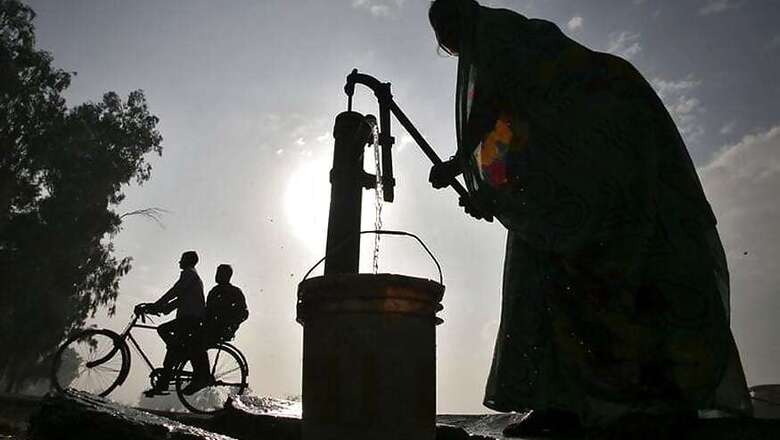
views
New Delhi: Dual sources of water are available in 15 out of the 21 major cities that face the risk of running out of groundwater by 2020, Rajya Sabha was informed on Monday.
Replying to supplementary queries during the Question Hour, Minister for Jal Shakti Gajendra Singh Shekhawat said in the remaining six cities also, where dual water sources are not available, such an arrangement can easily be made as most of them fall in Punjab where grid irrigation system is easily available.
"15 out of these 21 districts have dual water sources and are also dependent on surface water coming from rivers and dams. Therefore, it is not a cause of as much worry as expressed by the member," the minister said in Upper
However, he added that the situation arising out of depleting ground water in the country is certainly worrisome and awareness needs to be spread in this regard. NITI Aayog, in its report titled "Composite Water Management Index" published in June 2018, has mentioned that 21 major cities are expected to run out of groundwater by 2020.
This is based on the estimates of annual groundwater replenishment and its extraction. However, it does not take into account the groundwater availability in the deeper aquifers.
Besides, on measures taken to recharge aquifer mapping, Singh said the government has accorded priority to mapping in stress blocks of 256 districts.
"We have already completed mapping of 10 lakh square kms and will complete mapping in the remaining 15 lakh square kms in the next two years. However, we will complete mapping work
in the stressed districts within 3-4 months and make it available to states," said the minister.
The Centre launched the Jal Shakti Abhiyan which is a time-bound campaign with a mission mode approach intended to improve water availability including ground water conditions
in the water-stressed blocks of 256 districts in India.
In this regard, teams of officers from central government along with technical officers from Ministry of Jal Shakti were deputed to visit water stressed districts and to work in close collaboration with district-level officials to undertake suitable interventions.
However, in a written reply, Singh said that water being a state subject, efforts to initiate suitable demand side and supply-side interventions including conservation and management of water resources is primarily states' responsibility.


















Comments
0 comment